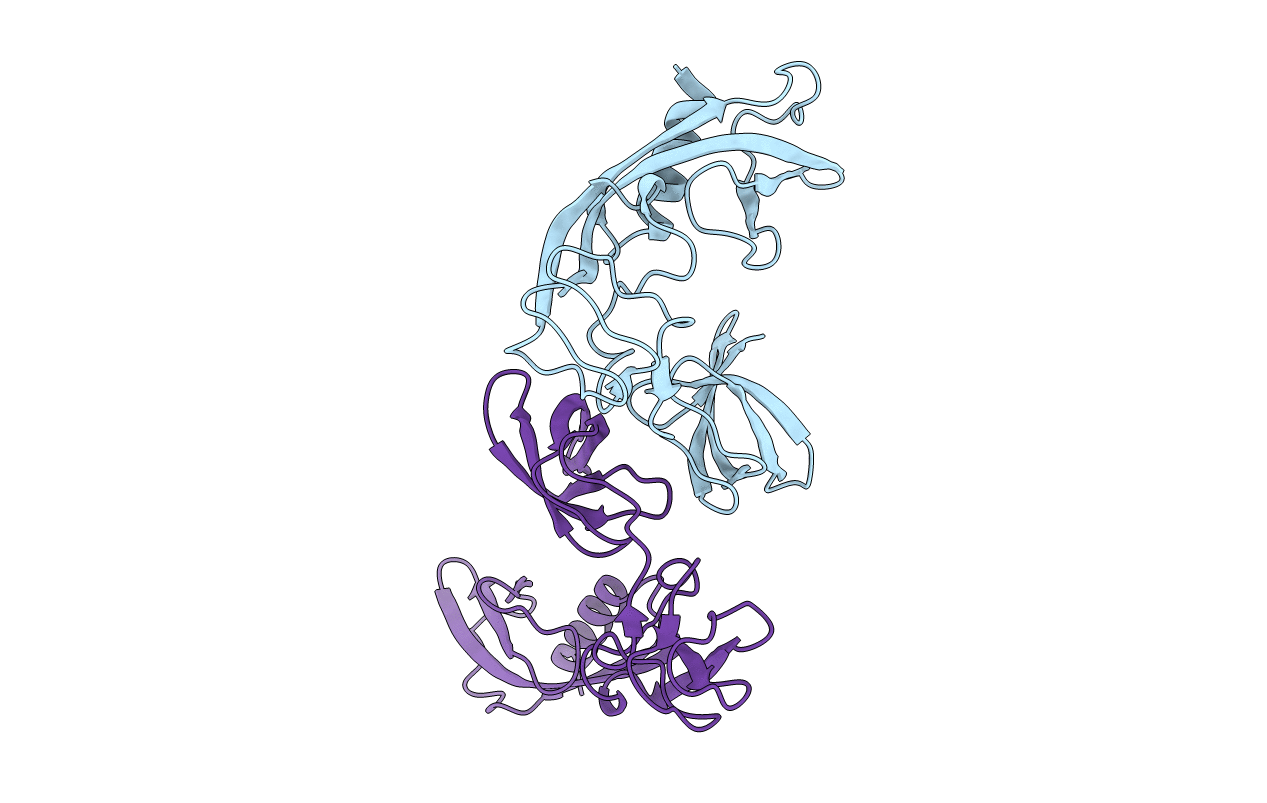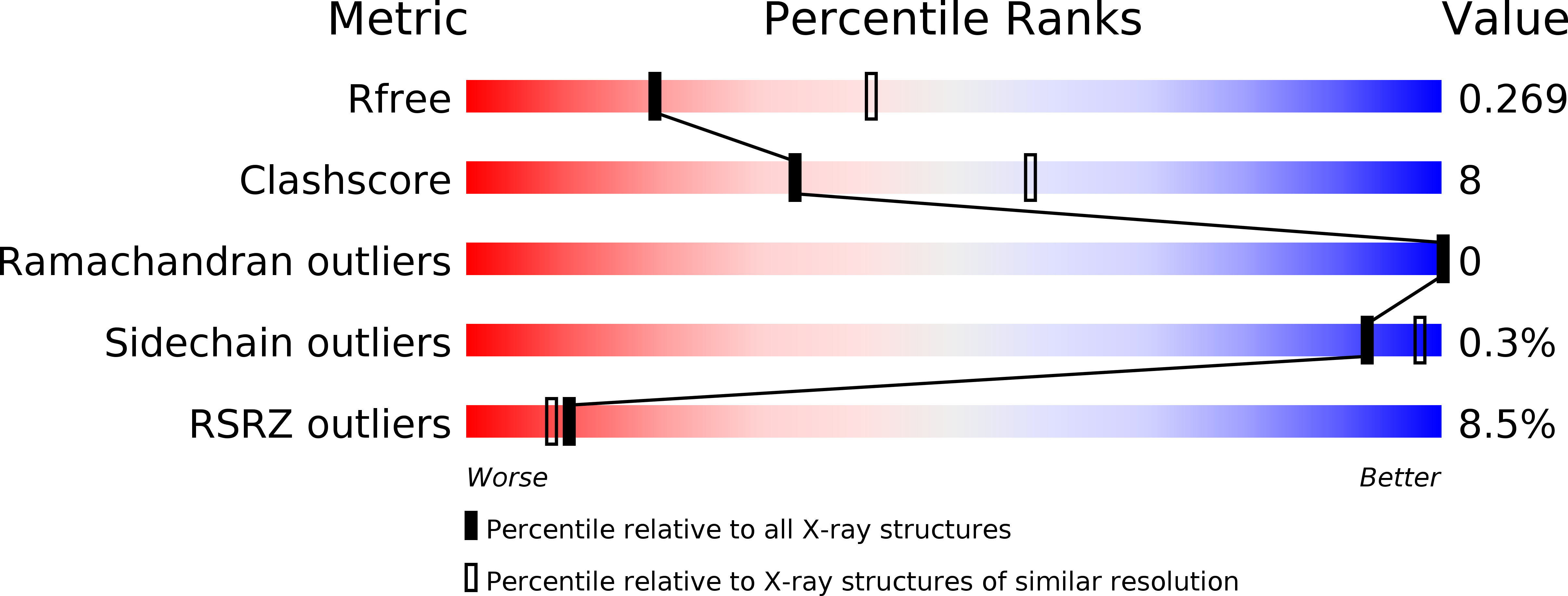
Deposition Date
2011-10-27
Release Date
2012-10-31
Last Version Date
2024-11-13
Entry Detail
PDB ID:
3VJP
Keywords:
Title:
Orthorhombic Crystal Structure of Salmonella FlgA in closed form
Biological Source:
Source Organism:
Salmonella typhimurium (Taxon ID: 90371)
Host Organism:
Method Details:
Experimental Method:
Resolution:
2.70 Å
R-Value Free:
0.27
R-Value Work:
0.24
R-Value Observed:
0.24
Space Group:
C 2 2 21


